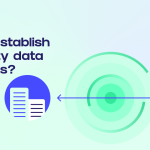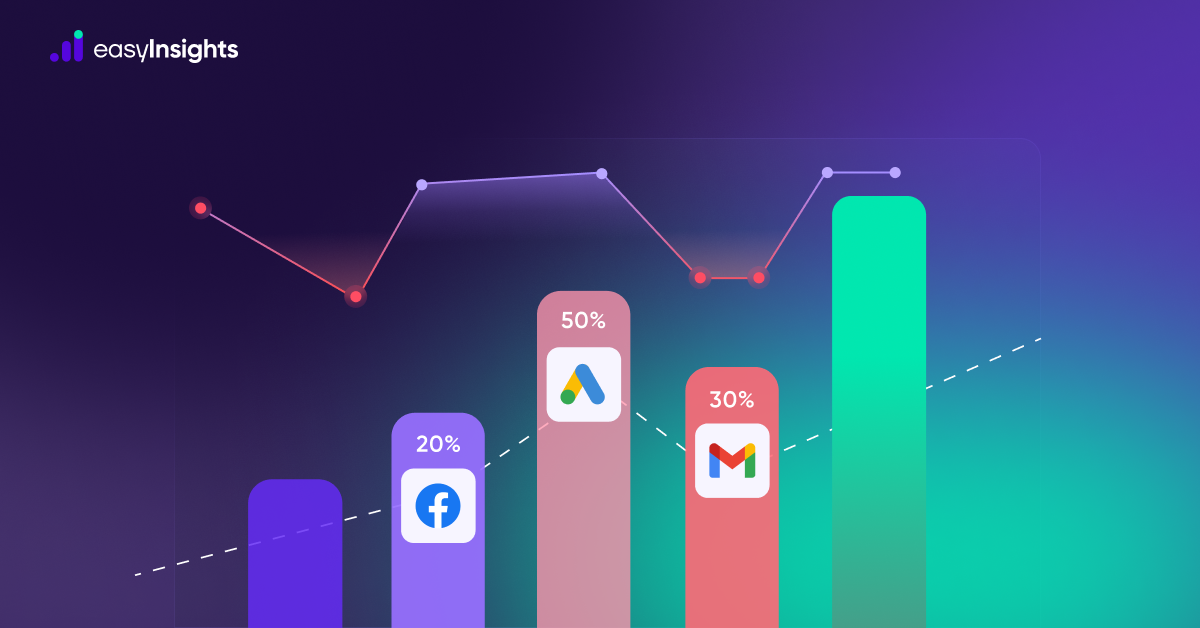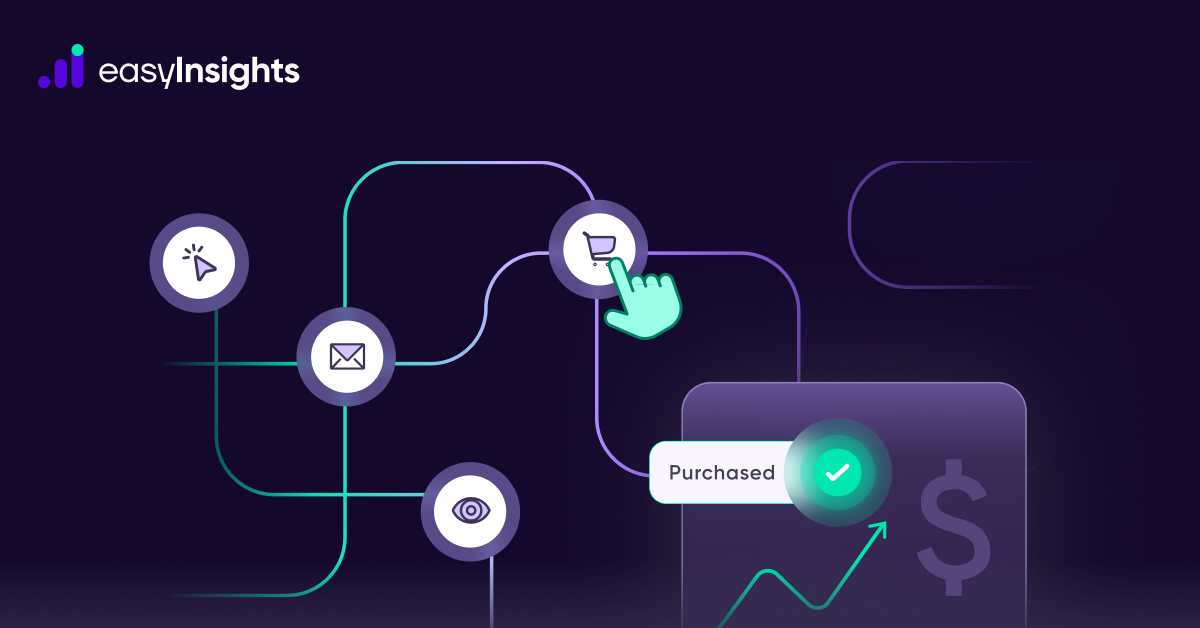
Have you ever wondered how a customer decides to buy your product or service? Is it a single, decisive moment, or a complex journey influenced by various factors? Understanding this process is crucial for marketers to optimize their strategies and maximize their return on investment (ROI). That’s where marketing attribution comes into play. So, let’s dive in.
Jump ahead to:
What is Marketing Attribution?
Marketing attribution is like trying to piece together a puzzle to understand the exact path that led someone to buy your product. It helps you figure out which marketing efforts (like email, social media posts, or other online channels) were most effective in convincing people to buy.
It is a process through which marketers evaluate the effectiveness or return on investment of the channels that lead to potential clients. In other words, it’s how the consumer learns about you and decides to buy your product or service. If you consider the end sale, it looks rather straightforward. But does anyone ever just go to a website and buy something? Rarely. The final purchase is influenced by a variety of messages and channels, including the Facebook advertisement they initially clicked on and the newsletter signup email.
In a perfect world, you would be able to follow a customer’s full journey from beginning to end along with personal narratives from each client explaining why they made certain choices along the route. However, that is neither scalable nor realistic.
Also Read: Everything You Need to Know about Customer Journey Mapping
Operational marketing responsibilities are getting more and more complicated because there are so many touchpoints to take into account. Fortunately, numerous marketing attribution models have been developed and introduced since the digital boom to take into account multi-channel selling.
Types of attribution Models
Single Touch Attribution Models
First Click Marketing Attribution Model
First Interaction and Last Interaction are similar in attributing all of the credit to a single click or interaction. First Interaction (also known as “First-Click”) assigns all responsibility for a conversion to the first contact your brand has had with a consumer. For instance, if a consumer discovers your company on Facebook first, Facebook receives full credit for all future sales. It makes no difference if a buyer came across you on Facebook, clicked a display ad a week later, and then went straight to your website. In this case, Facebook is given full credit.
Last Click Marketing Attribution Model
Last Interaction attribution is another name for “last-click” or “last-touch.” As its name suggests, this model attributes all of the success to the final communication a lead had with your company before converting. For instance, a visitor can come to your website via an organic search. They see a Facebook advertisement a week later and click it. They visit your website straight later that day and make a purchase there. In this case, the sale is entirely traceable to direct traffic. That final touchpoint receives a value of 100 percent. Most platforms, including Google Analytics, use this as their default attribution approach.
Last Non-Direct Click Marketing Attribution Model
A little bit more useful than a typical last-click model is the Last Non-Direct Click Model. A single interaction is still given 100% of the value. However, the final non-direct click removes any “direct” interactions that occur just before the conversion. Direct traffic is when someone manually enters your website’s URL or clicks a bookmarked link, indicating that they are already aware of your business. How did they find out about your business? Why did they go straight to your website? You can accurately attribute value to the marketing channel that generated the conversion by excluding direct traffic from a last-click model.
Multi-Touch Attribution Model
Multi-touch attribution models consider all of the consumer’s interactions with touchpoints before a purchase. These are regarded as more accurate models as a result. The value that is assigned to channels may vary depending on the multi-touch model you employ.
Linear Marketing Attribution Model
A linear attribution methodology distributes credit for a conversion evenly across all of the customer’s interactions with your company. For instance, a client discovers you on Instagram, joins your email list, and then clicks a link in an email. The next week, they make a straight purchase of Rs. 1200 from your website. In this circumstance, there are three touchpoints. Every touchpoint receives the same 33% credit, or an Rs. 400 conversion value, depending on the channel where the sale was made.
Time Decay Marketing Attribution Model
Similar to linear attribution, time decay attribution distributes value among numerous events. The Time Decay model, however, also considers the time that each touchpoint occurred, unlike Linear Attribution. The value of interactions increases as they get closer to the time of purchase. The latest interaction receives the most credit, whereas the first interaction receives the least credit.
U-shaped Marketing Attribution Model
The Position-based Attribution Model, also known as U-shaped Attribution, divides the credit for a sale between the prospect’s initial contact with your brand and the point at which they become a lead. Each of these points receives 40% of the credit, with the remaining 20% going to any other interactions that took place in between.
For instance, if a potential customer finds your company through a Google search, visits your Facebook page, and then subscribes to your email newsletter, the first and the third touches—Google and the newsletter—each gets 40% of the credit, and the Facebook visit gets the remaining 20%.
W-shaped Marketing Attribution Model
This model is based on the same concept as the U-Shaped model but includes an additional core touchpoint – the opportunity stage. Thus, the touchpoints credited with the first touch, lead conversion, and opportunity creation each receive 30% of the credit for the W-Shaped model. The remaining 10% is split between the additional engagements.
Summarizing all the 7 attribution models calculation:
Now that we’ve covered all seven attribution models, let’s wrap things up with an example of a multi-channel digital marketing campaign. Our paid advertising specialist is now executing an ad campaign on Facebook, a user named Swati visited our website for the first time from the Facebook paid ads. Of course, she won’t buy the thing right away, so after some study, Swati leaves the website and returns the next day from our retargeting advertisements on the Google Display network. Swati visits our website three more times during the next few days, first through organic search, then through an email marketing campaign to which she has subscribed, and finally by putting the website name straight into the browser. Now touch points are as follows:
- Facebook Ads
- Google Display Ads
- Organic
- Direct

Which Model Should You Choose?
Your attribution model will depend on how complicated your average consumer journey is. If your business is large, you may have advertisements running on several media, including radio, television, billboards, in-person, and social media. This implies that many buyers will engage with your brand on multiple occasions before making a purchase. In this situation, it makes sense to go with a comprehensive multi-touch approach that takes into account this challenging route. However, if your business is small and you simply advertise locally in the newspaper and on your website, you generally don’t need to invest in a highly complicated attribution model.
Final Words
Your attribution model serves a purpose. It’s meant to assist you in continuously enhancing your marketing plan. It’s time to choose a different attribution model if you modify your marketing plan repeatedly in line with your attribution model but don’t notice any tangible changes in outcomes (such as overall sales). Give your marketing strategy a chance to settle after any changes you make before deciding whether you need to make more. In addition to your marketing plan, other elements also play a role in your prospects’ choice to convert. Therefore, wait at least a few months after each change before making another.








